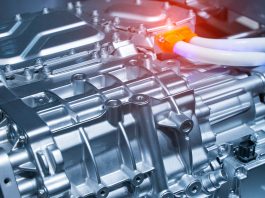A research team demonstrated that electrolyte additives increase the lifetime of lithium metal batteries, improving the performance of fast charging and discharging.
Professor Nam-Soon Choi’s research team, from the Department of Chemical and Biomolecular Engineering at KAIST, hierarchised the solid electrolyte interphase to produce a dual-layer structure and demonstrated groundbreaking run times for lithium metal batteries.
The team applied two electrolyte additives that have different reduction and adsorption properties, in order to improve the functionality of the dual-layer solid electrolyte interphase. In addition, the team has also confirmed that the structural stability of the nickel-rich cathode was achieved through the formation of a thin protective layer on the cathode.
Advanced lithium metal batteries
Securing high-energy-density lithium metal batteries with a long lifespan and fast charging performance is vital for realising their ubiquitous use as superior power sources for electric vehicles.
Lithium metal batteries comprise of a lithium metal anode that delivers 10 times higher capacity than the graphite anodes in lithium-ion batteries. Therefore, lithium metal is an indispensable anode material for achieving high-energy rechargeable batteries.
However, undesirable reactions among the electrolytes with lithium metal anodes can reduce the power outage, meaning that this remains an obstacle in achieving a longer battery lifespan. Previous studies focused solely on the formation of the solid electrolyte interphase on the surface of the lithium metal anode.
Solid electrolyte interphase technology
As a result, the team designed a way to create a dual-layer solid electrolyte interphase to resolve the instability of the lithium metal anode by utilising electrolyte additives, depending on their electron accepting ability and adsorption tendencies. This hierarchical structure of the solid electrolyte interphase on the lithium metal anode has the potential to be applied to lithium-alloy anodes, lithium storage structures, and anode-free technology to achieve market expectations for electrolyte technology.
The batteries with lithium metal anodes and nickel-rich cathodes represented 80.9% of the initial capacity after 600 cycles and achieved a high Coulombic efficiency of 99.94%. These remarkable results contributed to the development of protective dual-layer solid electrolyte interphase technology for lithium metal anodes.
Electrolyte additives
Professor Choi said that their research suggests a new possible direction for the development of electrolyte additives to regulate the unstable lithium metal anode-electrolyte interface and overcome the biggest hurdle in research of lithium metal batteries.
Choi added that anode-free secondary battery technology is expected to be a game changer in the secondary battery market and electrolyte additive technology will contribute to the enhancement of anode-free secondary batteries through the stabilisation of lithium metal anodes.









